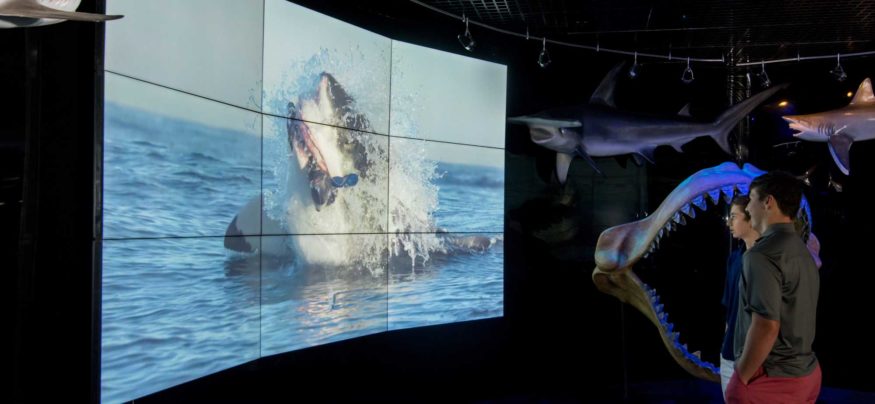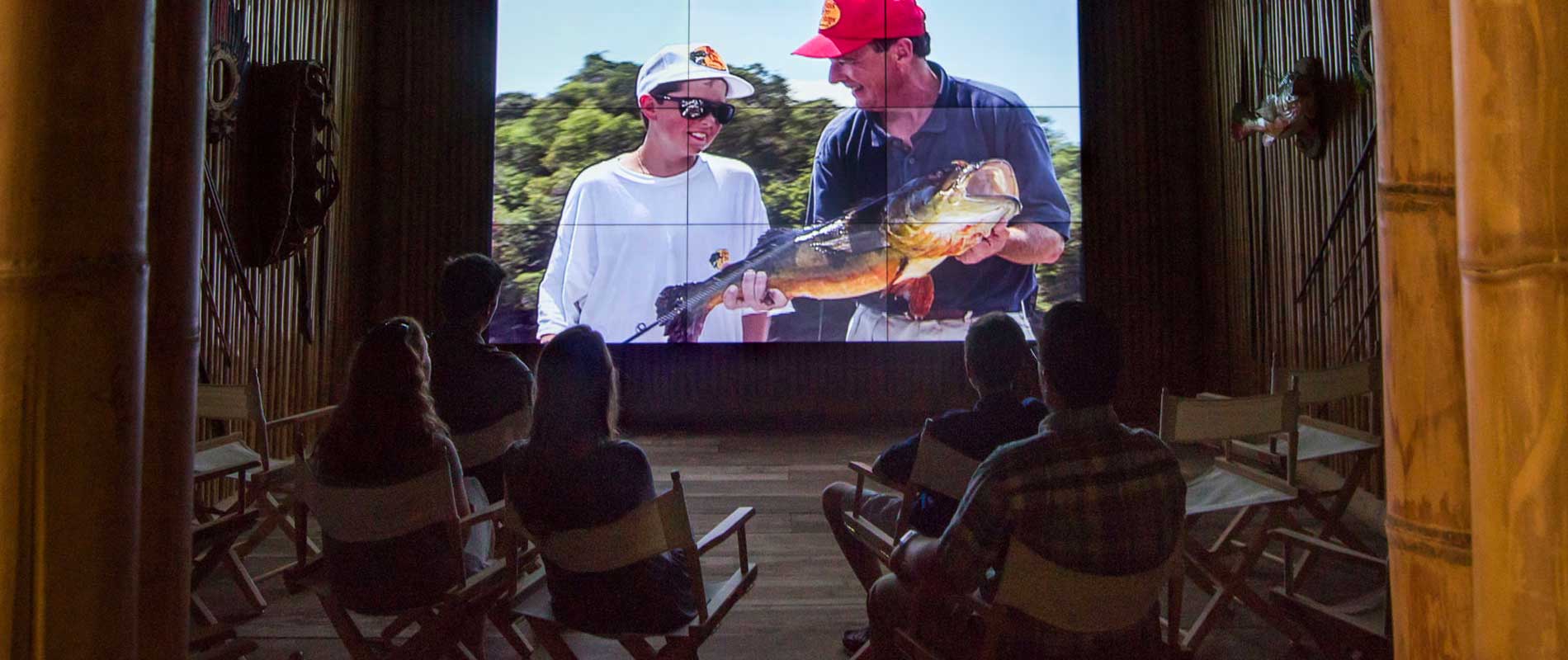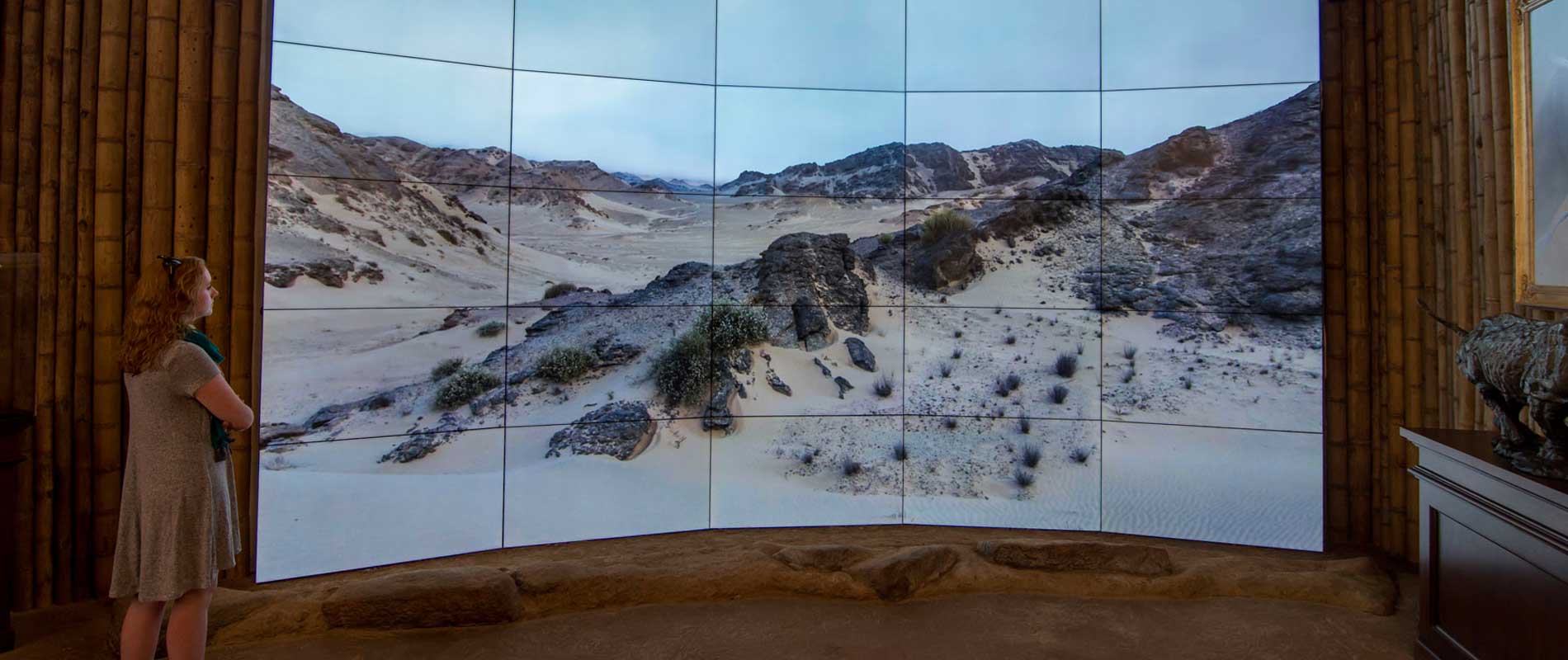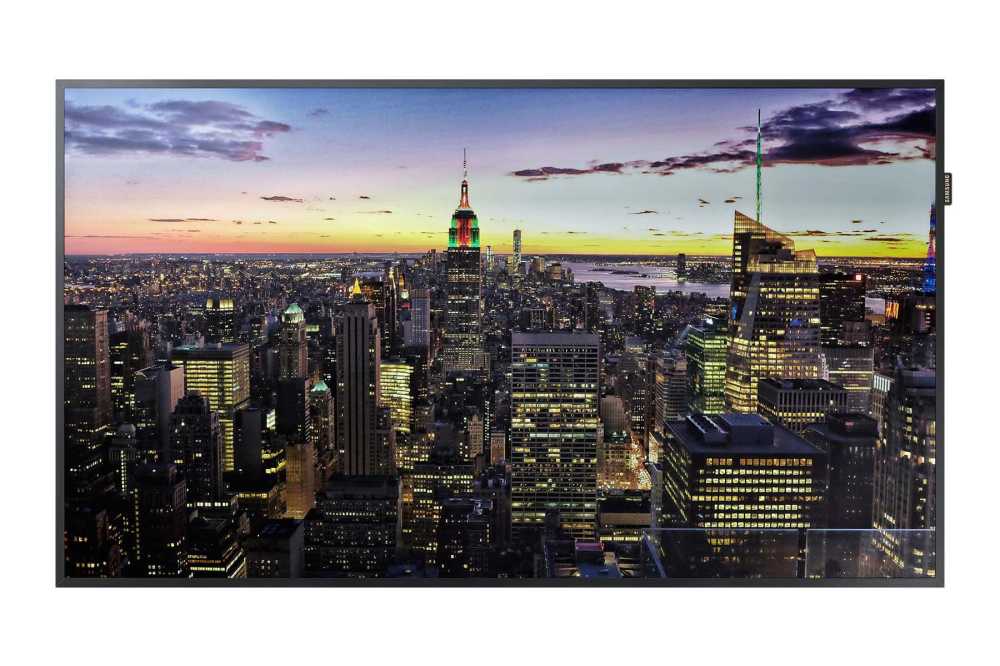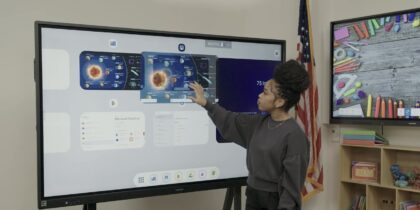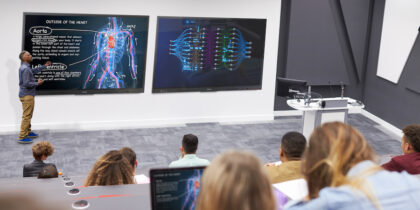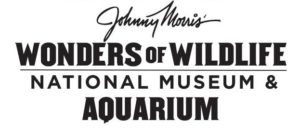
The Challenge
When planning started on Wonders of Wildlife National Museum and Aquarium, noted conservationist and Bass Pro Shops founder Johnny Morris wanted to create an experience that would connect visitors with the great outdoors. His vision was of a massive, 350,000-sq ft. adventure that used whatever tools and tactics were available to bring the museum vividly to life — including large-scale digital displays and signage.
The Solution
As the attraction was built, Morris worked with his A/V and design teams, systems integrators and other trades contractors to build, test, shift and expand a wide selection of video walls nested in dioramas and serving as feature walls — creating stunning, often larger-than-life digital visuals that celebrate nature’s grandeur. In addition, promotion and wayfinding displays were installed around the facility, with more than 150 Samsung displays used in total.
Nearly 10 years in the making, the museum’s scale and scope are largely unprecedented, encompassing a facility larger than the famed Smithsonian Museum of Natural History in Washington, D.C.
The Results
Wonders of Wildlife opened in September 2017, adjacent to the national headquarters of Bass Pro Shops, a destination shopping experience for everyone who loves the outdoors. Within months, it was voted America’s best new attraction, according to reader polls by USA Today, and best aquarium, also according to USA Today, and the attraction is inspiring other museum operators on how to effectively integrate technology into visitor experiences.

About Wonders of Wildlife
The massive Johnny Morris Wonders of Wildlife Museum and Aquarium in Springfield, Missouri, consists of a 1.5-million-gallon aquarium. It also contains immersive wildlife galleries that bring visitors eye-to-eye with a vast collection of record-setting game animals. The attraction was conceived by Bass Pro Shops founder Johnny Morris as a tribute to the people who hunt, fish and act as stewards of lands and waters.
The Challenge
Bringing the Great Outdoors In
Nearly 10 years in the making, the Wonders of Wildlife museum’s scale and scope are largely unprecedented, encompassing a facility larger than the famed Smithsonian Museum of Natural History in Washington, D.C. “It is our shared hope that the tremendous investment of time, energy and resources will have a profound, positive long-term impact on the future of hunting, fishing and conservation in America,” Morris told Ammoland about plans for the museum, which is estimated to have cost $300 million to build.
A core mission of the museum’s design was working out how to bring nature inside in a way that approximated the real experience in the wild. How, for example, could the design help visitors sense what it’s like to watch the Old Faithful geyser erupt, or to emerge around the corner of a trail and see a set of waterfalls at Yosemite?
The design encompassed more than a mile of immersive trails and exhibits, and more than 70,000-sq ft. of immersive wildlife galleries and dioramas. The prime objective of integrating displays and related technology was to ensure that it all enhanced — and never distracted from — the immersive experience of exploration in the wild.
The Solution
Defining a New Possible
Finding solutions was based on the museum’s many scenes and scenarios, from welcome and explanatory areas to thematic settings such as North American national parks or the African savanna. Museum officials say the design was led by objectives, with technology only applied where and when it made sense.
The main entry and ticketing area has a large, five-by-five, narrow-bezel video wall at a guest counter. The facility welcomes guests with a replica of the original Bass Pro Shops store before guiding visitors through a discovery theater, prehistory and Native American galleries, a National Parks area, and then on to Africa and exhibits built around environmental themes such as the Arctic and desert.
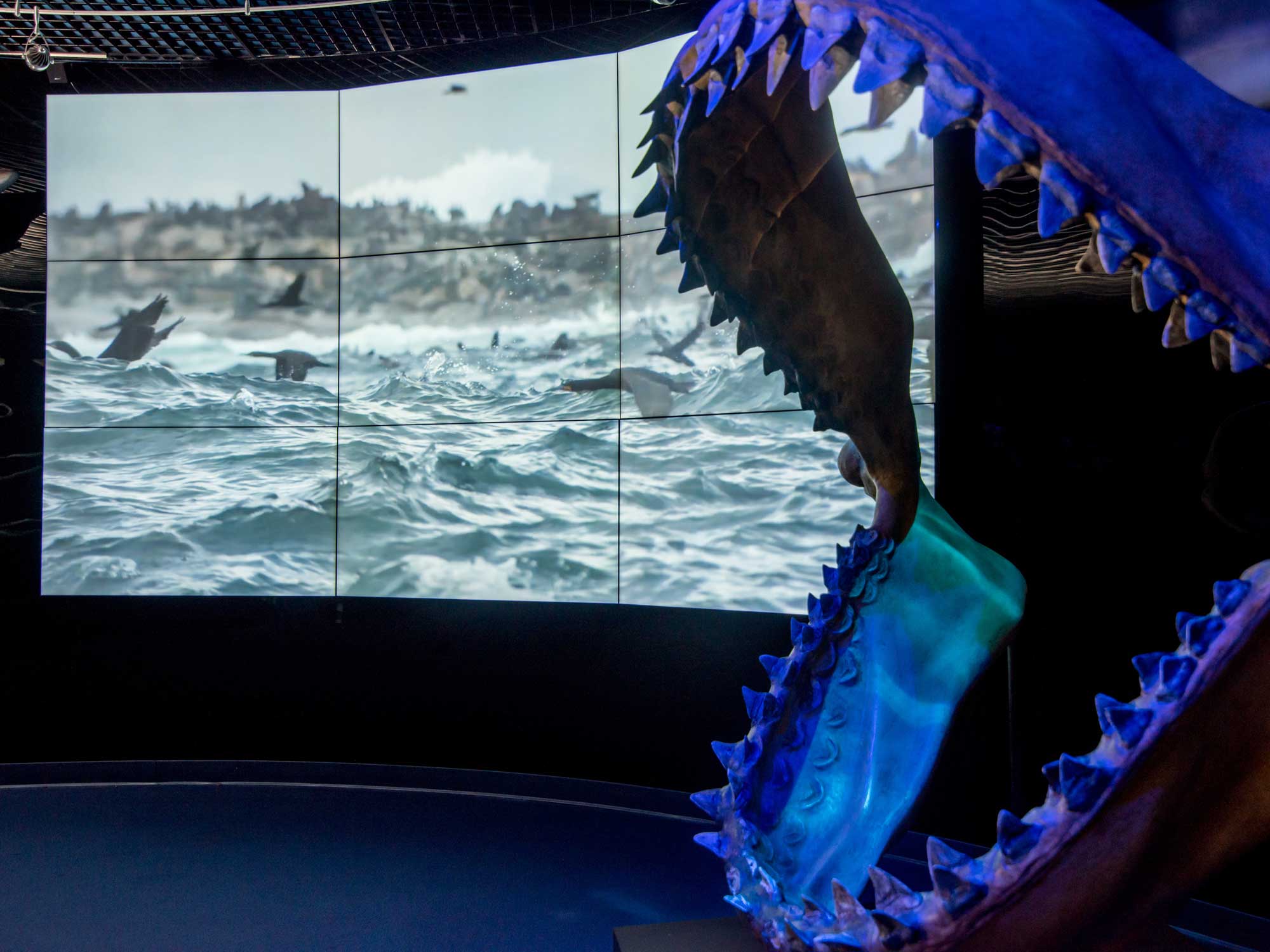
Some 100 55-in. Samsung ultra-narrow bezel displays are integrated into video walls of varying sizes in several exhibit and visitor areas, in addition to single and vertically stacked tower displays in portrait mode. Another 52 Samsung digital signage displays were used to provide exhibit information and wayfinding around the facility.
Enhancing Experiences
Along with the screens, the 1.6 miles of exhibit pathway use tools such as audio, scents, lighting and even raised and lowered temperatures to create moods and accentuate experiences. Content is changed out by the calendar quarter.
As the museum walls went up, Morris was continually on site assessing sightlines and the positioning of everything from structural walls, to the location of screens and the curvature of video walls.
Wonders of Wildlife officials say Samsung was a critical partner in the project’s development from its earliest stages — providing demonstrations of different displays to find the best fit for the varied needs and answering questions by all levels of management throughout the process.
The Technology
UH55F-E
Extreme Narrow Bezel Video Wall Display for Business. Featuring 1.7mm bezel for virtually seamless video walls.
QM65F
QM-F Series Digital Signage for business. Featuring 60Hz E-LED BLU panel technology.
The Results
Making Larger-Than-Life Impressions
In the short time it’s been open, Wonders of Wildlife has already garnered reader’s choice awards as the country’s best new attraction, according to USA Today, and its top aquarium, also according to USA Today.
The museum design breaks some well-established “rules” about how digital signage is applied, and guest interactions have proven doing things differently can work. For example, it’s often assumed that people will only glance at a video wall as they transition from one gallery area to another in a museum. At Wonders of Wildlife, designers schemed in a large video wall that emulates a scenic viewpoint on a national park trail, with timber logs as seating. Instead of breezing by, museum visitors often stop, sit on a log, and watch a full 12-minute video reel that runs eye-popping footage of national parks and other natural places.
By complementing the many exhibits and dioramas with video walls, visitors are getting larger-than-life impressions of nature — which tracks back to the original goals of celebrating nature’s grandeur and fostering conservation efforts.
Museum officials also say the rest of the industry is taking note and visiting Wonders of Wildlife to see what was done. Among the feedback, operators of other museums and attractions are describing lightbulb moments as they see how on-site display technology can provide much more than digital posters, menus and interactive kiosks at entries and on walkways. Displays, they’ve learned from Wonders of Wildlife, can be part of the exhibit and museum experience.
